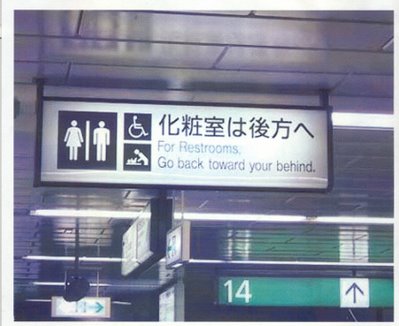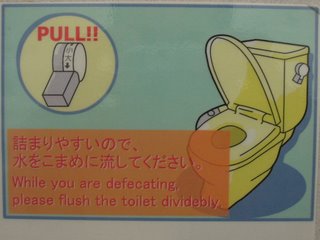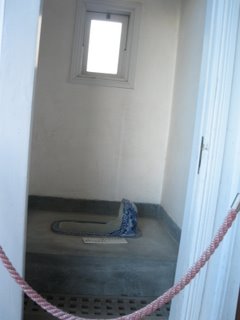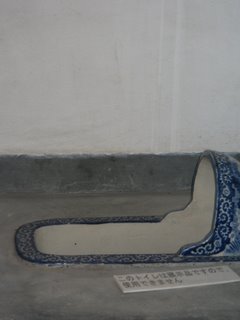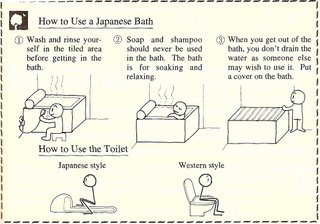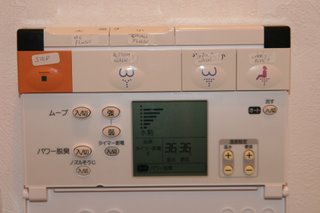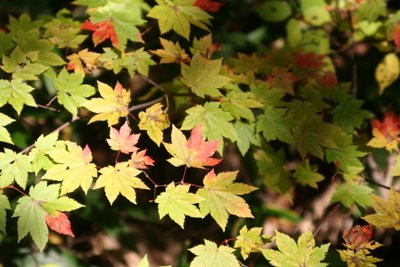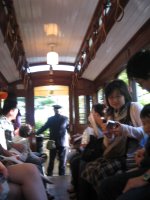Greetings from Japan, where New Year's is big. Bigger than Christmas. And the solemnity is switched. Here we had Christmas eve fireworks and big light shows. More of a party.
New Year's is supposed to be prayerful. It's common to visit shrines and temples during the first days of the New Year. At the Buddhist temples, they ring those big bells 108 times leading up to midnight to ring away the 108 types of sins. The big gong has to completely go silent from each gong before they bong the next time. So as I understand it, it will take over an hour.
Only 108 sins? They haven't been watching the news.
Nagoya's famous Shinto shrine was the #5 top visited site in Japan for the New Year's term (Dec 31 - Jan 3). The website said it was over 3 million visitors during that time. So that's where I'm going to go tonight. I hear that when you step out of the train station, the you will get carried there by the crowds, unable to get out. I want to see huge solemn crowds. If any people can do it, the Japanese can.
I won't be able to share pictures of it, as I won't likely take my camera. I don't want to seem disrespectful. My mere presence might be disrespectful enough.
The trains and subways run all night on New Year's. The only day of the year.
There are traditional foods that people make for New Year's. The right way is to make all the dishes during the days leading up to Jan 1 so they don't have to cook for a few days. And from what I understand, it takes a few days to prepare it all.
* * * * * * *
Some pictures for no good reason.
* * * * * * *
ATM machines are strange here. They close. Depending on the locaion they will close down from 10 or 11 at night until 7am or so. Next, my bank charges a fee depending on the time you use it. You get an "after hours fee" of about a dollar if you use if outside of normal business hours, or on the weekend. Like overtime pay for the ATM.
The best is that the ATM gets New Year's Day off. Acutally it gets Jan 1-3 off. I guess since all the shops will be closed, the atm doesn't need to stay open? Or the bank doesn't want to have employees work to put more money in over the holidays?
So if you're a pickpocket or pursesnatcher, the few days leading up to New Year's must be the richest time of the year for you, since everyone is carrying big cash. Pickpocketing and pursesnatching are number 97 and 98 of the 108 sins, I think.
* * * * * * *
Please drive safely. Caution, recycling ahead.

* * * * * * *
Bounenkai
There is a traditional year-end party for businesses and organizations here called a bounenkai. I attended (as the only foreigner) the bounenkai held by my department.
Just like a year end holiday party at other an American company it’s a time to reflect on the year’s accomplishments, to forget the year’s failures, and to cross-dress and dance around on stage…
Well I guess that might be a little different than in America.
Typical entertainment is for the members of the group to have little skits performed. They are required of the ‘freshmen’ or new employees. My department had so many freshmen that they had two teams. There were also two other teams of more experienced members. And of course there was judging and prizes, as they are not going to put the effort into it without the chance to be come out as the winner.
I asked a friend what the skits are called, as ‘skit’ is not in my dictionary. The quote from my colleague? "The are called ‘gei’. It’s pronounced like ‘gay’ but it’s not relation." He’s right, the ‘gei’ is the first syllable and sumbol of ‘geisha’, which directly translates as Art Person. But he was wrong on one point -- the English meaning of that syllable is more relation than not, in this case.
All four skits were funny. Even though I only understood 10-20% of the words, all the meaning was clear. Examples include :
(1) A couple goes to the wedding planner. The man is an employee of my company, dressed in hard hat and work jacket. His bride-to-be of course played by another male worker of my department in full drag. (There is one woman in my department of about 140 people, but for some reason she stayed home.) The groom-to-be viewes the estimate from the wedding planner complaining about the cost. He then goes through the details of the estimate complaining about things like the size of the shrimp served (with accompanying slide show on the screen showing engineering measurement tools used to measure a shrimp). Our company is big on cost cutting. Very funny stuff.
(2) A company recruiter is explaining the coming job for a new employee, in a ‘Good News, Bad News’ manner. "You’ll get lovely food gifts left on your desk from people in vendor companies. Unfortunately you’ll be away at other facilities and won’t return until after the expiration dates on the food gifts." "You’ll get a lovely, professional looking work jacket. Unfortunately it will be covered in grease and goop after the first week and you’ll look homeless if you wear it outside the company." And the slide show had pictures of true examples of these things.
(3) My favorite one was by the freshmen. Never mind the so-called plot of the skit. The plot was just there to get them to the hook, which was that it included 5 grown men dancing around in skimpy red skirts, halter tops and santa hats. All dancing perfectly in sync to some Christmas pop song. The accompanying slideshow had before and after pictures of each of the dancing members. Before and after what? Before and after they shaved their armpits and legs. Yes, these young guys gave their all.
And how did the audience react? This was my favorite part. Except for one tall foreigner in the back of the room who couldn’t contain himself, the whole crowd was stonefaced and silent. I think someone actually brought a cricket in so that you could hear it chirping at the end instead of applause.
There are two possible reasons that I could see.
(1) The audience seemed like they had seen it all before, because they probably had seen it all before. From what I understand, the ‘engineers in drag’ is a common bit at the bounenkai. Even the wait staff in the banquet hall was unmoved. "Japanese boys in drag. Well, how very clever. That makes the 12th bounenkai this year with boys in drag."
(2) This is the more likley answer: It is necessary to make the freshmen squirm and die a slow death on stage. The more humiliating the skit, the better. It all serves as emotional hazing as they give their all, and get no love back. Those poor guys were up there, shakin’ what their mama gave them (which wasn’t much), and looking out at the crowd to see 120 people looking like they were waiting their turn with the dentist. Well, I can hope that maybe one of those poor guys looked out to the back to see the tall foreigner cracking clean up in his seat. (Not really a seat, but a cushion on the floor. Anyway you get the idea.)
* * * * * * * * *
Japanese Proverb:
One kind word can warm three winter months.
(I guess it helps if you can understand the word...)











